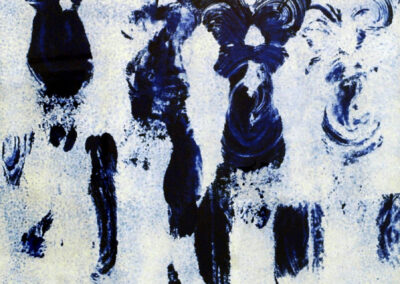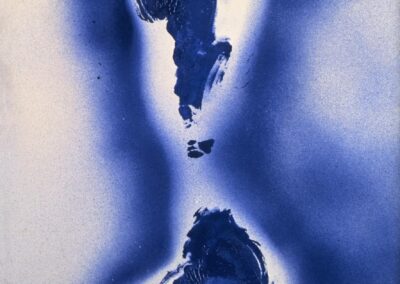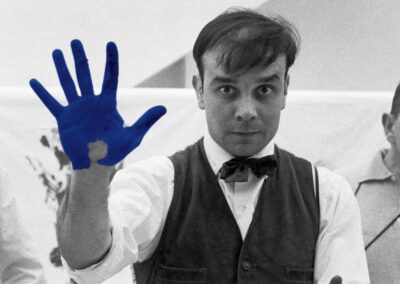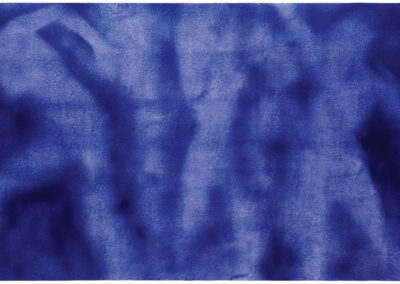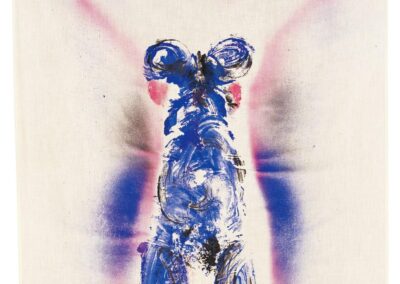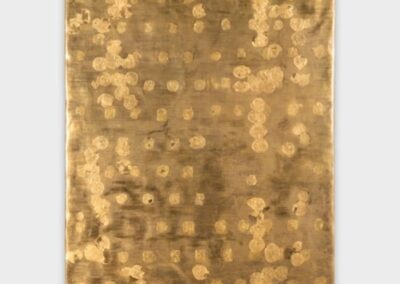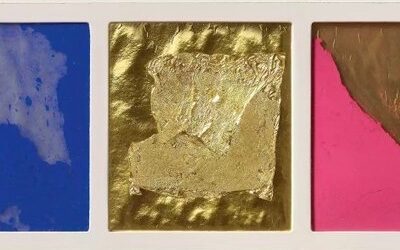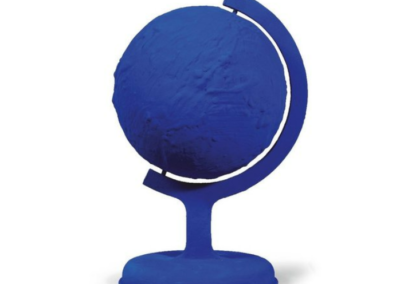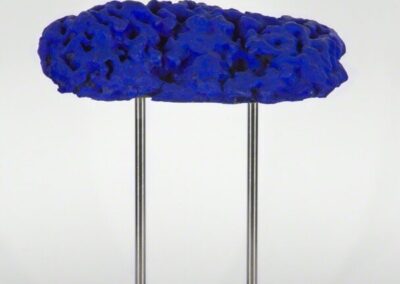Our next Artist You Need To Know is Yves Klein (1928 – 1962).
Klein was a French artist and one of the most important figures in the period of post WW II European art, and his influence is still present in many cultural areas today. A leading member of the French artistic movement of Nouveau réalisme, Klein was among the early pioneers and practitioners of performance art, was instrumental in the development of minimal art and pop art. Klein is also known for the creation, use and the proliferation of the colour International Klein Blue.
“The imagination is the vehicle of sensibility. Transported by the imagination, we attain life, life itself, which is absolute art.”
He was born in Nice, France : his parents were both painters though working in very different styles (his father exploring more figurative post-impressionistic ideas while his mother was among the more significant painters in the Art informel movment which was a Paris-based abstract painters group). Though Klein did not ever have ‘official’ or formal art education, his parents – and the artistic circles within which they moved – were a major influence on the young Klein.
Klein did study at the École Nationale de la Marine Marchande and the École Nationale des Langues Orientales (1942 – 1946) : he began to paint during this period and during ‘this time, he became friends with Arman (Armand Fernandez) and Claude Pascal…At the age of nineteen, Klein and his friends lay on a beach in the south of France, and divided the world between themselves; Arman chose the earth, Pascal, words, while Klein chose the ethereal space surrounding the planet, which he then proceeded to sign…”. Hannah Weitemeier, in her book Internacional Klein Blue, relates this story and adds that “With this famous symbolic gesture of signing the sky, Klein had foreseen, as in a reverie, the thrust of his art from that time onwards—a quest to reach the far side of the infinite.”
He began exhibiting in 1955, garnering immediate attention : a significant showing of his works took place at Collette Allendy’s gallery in February 1956, another at the Galleria Apollinaire in Milan (in January 1957) and later that same year he would have many exhibitions in Paris and Düsseldorf. Later exhibitions would follow in New York and Los Angeles : Klein’s first major retrospective was in Germany in 1961.
“Color is sensitivity in material form, substance in its purest form.”
Klein is best known for several bodies of work and a number of iconic images over his too brief career : Monochrome works: The Blue Epoch during which he worked on his IKB (International Klein Blue) paintings that were uniform in colour and flatness, The Void (1958), Anthropométries (which straddled painting, performance and like his IKB works are among the artworks that Klein is best known for : the gallery above has a selection of these works and documentation of their performative creation) and the collaboration Le Saut dans le vide (Leap into the Void) which is a photomontage by Shunk-Kender (Harry Shunk and Janos Kender) of a performance by Klein at Rue Gentil-Bernard, Fontenay-aux-Roses, October, 1960.
That image is the first in the gallery below.
Klein’s work is not easily classified and some art historians have even described him as an early proponent of post modernism : it straddled and challenged the boundaries of conceptual art (as manifest in his painted aesthetic), body art / performance art and happening.
From The Art Story : “Yves Klein was the most influential, prominent, and controversial French artist to emerge in the 1950s. He is remembered above all for his use of a single color, the rich shade of ultramarine that he made his own: International Klein Blue. But the success of his sadly short-lived career lay in attacking many of the ideas that underpinned the abstract painting that had been dominant in France since the end of the Second World War. For some critics he is a descendent of Marcel Duchamp, a prankster who lampooned settled understandings of painting and opened art up to new media. Others consider him as a descendant of earlier avant-garde artists such as Kazimir Malevich and Aleksander Rodchenko, who were also attracted to the monochrome. And even in the ways he used performance later on in his career, he is like many artists who rediscovered some of the tactics of earlier avant-gardes in the 1950s and ’60s. Klein might also be compared to his contemporary Joseph Beuys, for, like Beuys, he embraced aspects of Romanticism and mysticism – Klein was intrigued by Eastern religion and Rosicrucianism, and was even influenced by judo. Also like Beuys, many have condemned him as an obscurantist and a charlatan: yet the brevity, wit, and seductive beauty of much of his work continues to inspire.”
From an exhibition at the Walker Art Centre in 2011 celebrating Klein’s artistic and cultural impact : “Half shaman, half showman, Yves Klein took the European art scene by storm in a career that lasted just eight years, from 1954 to 1962. An innovator who embraced painting, sculpture, performance, photography, music, theater, film, architecture, and theoretical writing, Klein was a precursor of many movements of the postwar avant-garde, including minimal art, conceptual art, land art, and performance art. He self-identified as “the painter of space,” seeking to achieve immaterial spirituality through pure color—primarily an ultramarine blue of his own invention, International Klein Blue. Through these and other experiments Klein aimed to reach “beyond the problematic in art” and rethink the world in spiritual and aesthetic terms, creating a pivotal transition between modern art’s concern with material objects and contemporary notions about the conceptual nature of art.”
“Then, when the creation starts, I stand there, present at the ceremony, immaculate, calm, relaxed… ready to welcome the work of art that is coming into existence in the tangible world.”
In 1962, Klein married fellow artist Rotraut Uecker : but several months later he would die from a heart attack at the shockingly young age of 34. In considering the radical nature of his art and aesthetic, one can be forgiven for wondering what else he might have done, especially in light of his influence more than half a century after his passing.
His works can be found in numerous institutions, including the Tate, the Museum of Modern Art, the Menil Collection, Moderna Museet, Fondazione Prada, Frederick R. Weisman Art Foundation, Solomon R. Guggenheim Museum, Centre Pompidou and Kunsthaus Zurich.
Much more about the life and legacy of Yves Klein can be seen here. Klein’s IKB / International Klein Blue has inspired a number of other artists as well as several musicians, and many continue his tradition of both serious inquiry and a cheeky irreverence to art and culture.
From here : “his eccentric blend of mystical and materialist attitudes – his interest in the ineffable, and in the mechanics of the art market – has inspired many to believe that a lifetime as an artist can consist of all kinds of activity, from writing to painting to performing.”
Another fine online resource to learn about Klein is the Yves Klein Foundation : their site is here. A fine article from Art in America about Klein’s very contested legacy can be enjoyed here.







